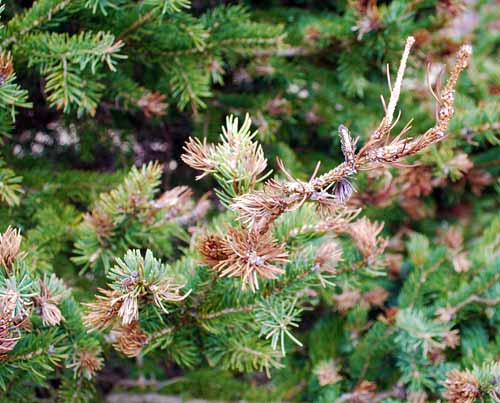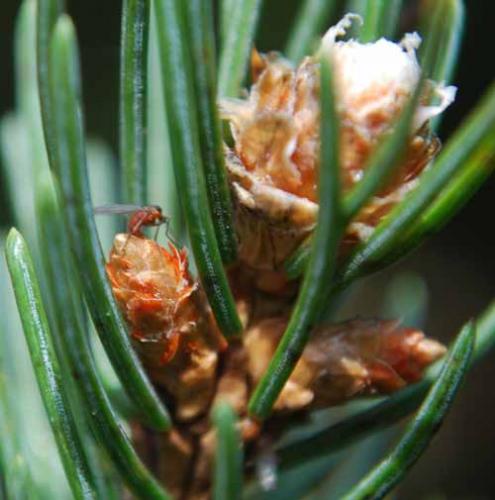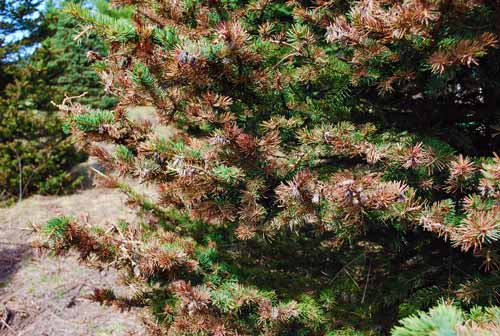Spruce gall midge adults emerging and laying eggs now
Damage from spruce gall midge can kill individual shoots and repeated attacks can disfigure spruce trees, making them unsalable.
The spruce gall midge, Mayetiola piceae, is an unusual pest that we have found on Black Hills, white and Norway spruce primarily in Michigan’s northern Lower Peninsula and Upper Peninsula. The midge, a tiny, fly-like insect, overwinters in numerous swellings or galls that encircle the terminal shoots. These galls have a slight, pimply-looking protrusion at the end where the pupa has pushed up against – and occasionally through – the outer shell They are ready to emerge when they complete their development (Photo 1).

Photo 1. Swollen gall on shoot. Note the pimply-looking protrusions.
Photo credit: Jill O’Donnell, MSU Extension
The adults who are emerging now will mate and lay eggs in the bud scale (Photo 2). The bright orange, but tiny, larvae hatch within seven to 10 days and bore into the shoots to feed on plant juices. In response to the feeding, plant tissue swells up around the larvae to form the galls. The larvae continue to feed inside this gall throughout the season. The damage can kill individual shoots. Repeated attacks can cause brooming, a proliferation of shoots at the ends of the twig and disfigured growth (Photo 3).

Photo 2. Female laying eggs in bud scales. Note the orange eggs spilling out of the bud scale.
Photo credit: Jill O’Donnell, MSU Extension

Photo 3. Repeated attack can severely damage the tree.
Photo credit: Jill O’Donnell, MSU Extension
Michigan State University Extension recommends you inspect trees in the early spring for signs of the galls. If found, prune those shoots out to remove the insects before they can emerge. Often, the midge seems to attack just a few trees in the beginning; culling those trees can help minimize future damage from this insect. Be sure to remove the pruned shoots or tree from the field.
If damage is really severe, or you miss the time to cull the tree, treat the trees in the next few weeks when the eggs begin to hatch. Make sure to get good coverage as we often begin to see this problem develop in the spray shadows where you are not getting coverage.
Additional information
- Spruce gall midge tip sheet by MSU Extension
- Spruce gall midge in Christmas Trees YouTube video by MSU Extension's Christmas tree specialists



 Print
Print Email
Email




